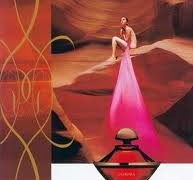Revisiting Hermessence : Myrrhe Eglantine, Cedre Sambac, Agar Ebene
When the Hermessence collection was first launched in 2004, it was conceived as an olfactory haiku—a few subtle details combined to create a complex impression. I still remain partial to the original creations like Vétiver Tonka and Ambre Narguilé, but the Middle East-inspired trio of Myrrhe Églantine, Cèdre Sambac, Agar Ebène has become my favorite. The compositions are complex and layered, with the classical Hermès radiance.

Myrrhe Églantine, for instance, plays with the shimmering effect of rose, setting it against a velvety background. This contrast has fascinated me from the first time I tried the perfume and the more I wear it, the more beguiling it becomes. The fragrance starts out on a sweet citrus, followed by a dark glimpse of violet. Unexpectedly, however, the notes fuse into an illusion of a crimson rose. When later, myrrh, a plush, resinous material that smells like licorice, woods and unburned incense, stakes its claims, the rose becomes even warmer.
















Joi in Giorgio Armani Mania : Long Lost Favorite Perfume: Yes!! January 25, 2024 at 2:54am